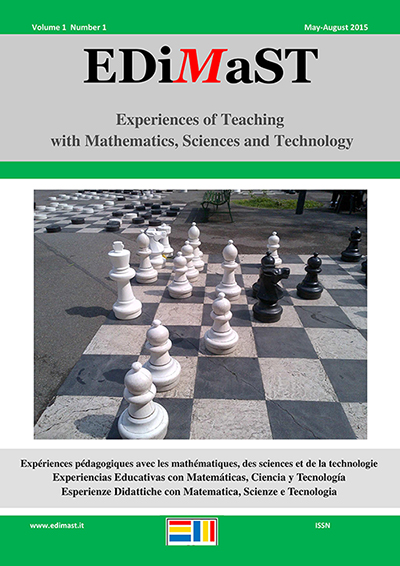Alla scoperta di Galileo Galilei: un’esperienza didattica in Unicamearth island
Keywords:
Galileo Galilei, learning by experience, solar system, virtual world,Abstract
Virtual worlds in education represent an innovative strategy that needs to be experienced in order to bring out the potential and future possibility for use. Virtual worlds are inhabited as an alternative experience to reality, a reality where the value of your presence may influence the efficacy of both education and teaching. These are the theories germane to the experience described in this article, which focuses on the use of virtual worlds for the development of scientific skill. This project develops the virtual Unicam Earth Island within the island, which is built on the server of the University of Camerino with Open Sim software. The involvement, immersion and collaboration are hallmarks of the experience, which develop via learning through doing, enabling students not only to benefit from the environment in an active way, but also to interact with it and build upon it. The project Unicam Earth Island is part of Annalisa Boniello’s PhD regarding the teaching of Earth Sciences. Annalisa Boniello is at present, working on her PhD at the School of Science and Technology, Geology Division, University of Camerino, Italy.References
Bartle R., (2003). Designing virtual worlds. New Riders Publishing.
Biondi G., (2006). La necessità di una nuova visione. Gli ambienti di apprendimento e la nuova scuola, Indire,12 dicembre 2006.
Boniello A., Paris E., (2013). Teaching Earth Science in Muve in Proceeding IeD 2013, King’s College London, UK, 172-173.
Boniello A., Paris E., (2014). Campi Flegrei nei Mondi Virtuali, DIDAMATICA2014, Naples, 230-233
Boniello A, Paris E., (2015). A teacher training on geosciences in Virtual Worlds in International Conference New Perspectives in Science education proceeding, Florence.
Carro R., (2010). in Tecnologie per la didattica, a cura di Faggioli, Apogeo, Milano.
Dawley L., (2009). Social network knowledge construction: Emerging virtual world pedagogy. On The Horizon, 17(2), 109-121.
Dawley L., Dede C., (2014). Situated learning in virtual worlds and immersive simulations. Handbook of research on educational communications and technology. Springer New York, 723-734.
Dede C., (2009). Immersive interfaces for engagement and learning. Science, 323(5910), 66–69. doi: 10.1126/science.1167311Chapter 71: Virtual Worlds Page 33 of 39.
Dede C., (2012). Customization in immersive learning environments: Implications for digital teaching platforms. In C. Dede & J. Richards, (Eds.). 2012. Digital teaching platforms. New York: Teacher’s College Press.
De Freitas S., (2006). Learning in immersive worlds: A review of game-based learning, Joint information systems committee, Bristol, JISC e-Learning Programme.
Devecchi M., (2010). Progettare per competenze. http://www.disal.it/Resource/scuolaedidattica-Dossier.pdf
Dickey M.D., (2005a). Three-dimensional virtual worlds and distance learning: two case studies of Active Worlds as a medium for distance education. British Journal of Educational Technology 36, 439–451.
Dickey M.D., (2005b). Brave new (interactive) worlds: A review of the design affordances and constraints of two 3D virtual worlds as interactive learning environments. Interactive Learning Environments 13, 121–137.
Dickey M.D., (2003). Teaching in 3D: Pedagogical affordances and constraints of 3D virtual worlds for synchronous distance learning. Distance Education, 24(1), 105–121.
Fedeli L., (2014). Embodiment e mondi virtuali, implicazioni didattiche, Franco Angeli, Milano.





